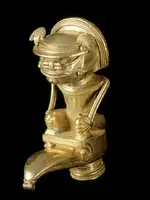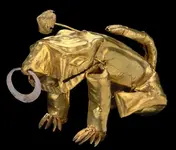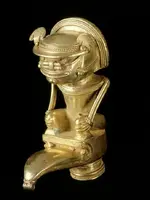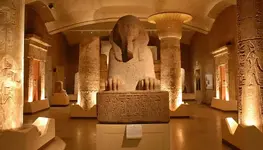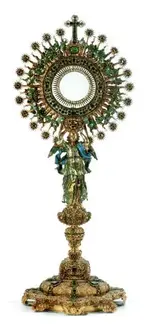Crow
Silver Member
- Joined
- Jan 28, 2005
- Messages
- 4,049
- Reaction score
- 11,263
- Golden Thread
- 0
- Location
- In a tax haven some where
- Detector(s) used
- ONES THAT GO BEEP! :-)
- Primary Interest:
- Other
- #1
Thread Owner
Some legendary treasures turn out to be true and their discovery is often not discovered by archeologist but everyday people.
The discovery of the Malagana Treasure began with an accident in a sugar-cane field at Harienda Malagana, which is situated on the flatlands of the fertile Caura river , near the city of Palmira in western Colombia. A Farm worker was driving a tractor)[SUP] [/SUP]across the field when the ground suddenly gave way , and the tractor fell into a large hole. As the driver inspected his predicament, a golden object caught his eye. The object was in fact made of gold, and the hole turned out to be an ancient tomb know in archeological circles as a hyogeum.
The poor worker removed some of the gold work artifacts and quietly sold them. But Before long, knowledge his nefarious activities caught the attention of other farm workers. Between October and December 1992 news broke out by word of mouth as secrets cannot be kept secret when too many found out and started a gold rush, to Hacienda Malagana's sugar-cane field.[SUP] [/SUP]According to newspaper accounts, the looters numbered as many as 5,000. digging away to what turned out the be an ancient cemetery.
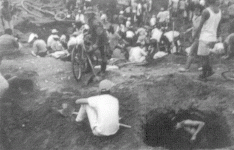
Reporters on the scene captured the madness mayhem on camera and published their photographs in newspapers.[SUP] [/SUP]Even the police and army arrived on the scene were totally ineffective in controlling the chaos o0f fights between various groups fighting over the spoils, leading to one murder perhaps more, and the wide scale destruction of the ancient cemetery. Countless artifacts were carried off by the local population of rural people and farm labourers. The weight of the gold objects that were taken from the site has been estimated at 160 kilograms (352 pounds) by one source (Bray 2000:94) and between 140 kilograms (308 pounds) and 180 kilograms (396 pounds) by another, who speculates that the amount might even have been greater than 180 kilograms. However the real amount will never be known.
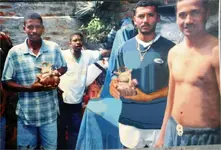
But Late in 1992 the gold museum in Bogotá received an impressive assortment of the gold objects made in an unfamiliar style. Research revealed that the source of the artifacts was the Hacienda Malagana site.Finding treasure is one thing being able dispose of it is another. One can only speculate how many objects was melted down for it gold content as lost forever?
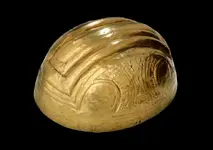
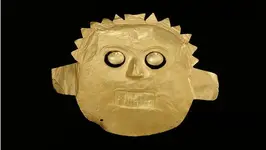
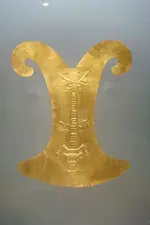
If anything the travesty of this legendary treasure discovery added fuel to claims of vandalism to a nations cultural heritage. Even so artifacts are still being hunted down from the site.
For any would be treasure hunter this poses a ethical problem when is a treasure a cultural artifact belong to a nation as a whole as cultural patrimony and what is treasure that is not. The line is murky as somewhat grey. However the current status of many Nations use it as cash grab of assets. Questions also should be asked what actually happens to these artifacts once claimed by respective authorities are hidden away in museums from the very people whose ancestors they have come from too poor to even visit the museum?
Questions indeed.
Crow
The discovery of the Malagana Treasure began with an accident in a sugar-cane field at Harienda Malagana, which is situated on the flatlands of the fertile Caura river , near the city of Palmira in western Colombia. A Farm worker was driving a tractor)[SUP] [/SUP]across the field when the ground suddenly gave way , and the tractor fell into a large hole. As the driver inspected his predicament, a golden object caught his eye. The object was in fact made of gold, and the hole turned out to be an ancient tomb know in archeological circles as a hyogeum.
The poor worker removed some of the gold work artifacts and quietly sold them. But Before long, knowledge his nefarious activities caught the attention of other farm workers. Between October and December 1992 news broke out by word of mouth as secrets cannot be kept secret when too many found out and started a gold rush, to Hacienda Malagana's sugar-cane field.[SUP] [/SUP]According to newspaper accounts, the looters numbered as many as 5,000. digging away to what turned out the be an ancient cemetery.

Reporters on the scene captured the madness mayhem on camera and published their photographs in newspapers.[SUP] [/SUP]Even the police and army arrived on the scene were totally ineffective in controlling the chaos o0f fights between various groups fighting over the spoils, leading to one murder perhaps more, and the wide scale destruction of the ancient cemetery. Countless artifacts were carried off by the local population of rural people and farm labourers. The weight of the gold objects that were taken from the site has been estimated at 160 kilograms (352 pounds) by one source (Bray 2000:94) and between 140 kilograms (308 pounds) and 180 kilograms (396 pounds) by another, who speculates that the amount might even have been greater than 180 kilograms. However the real amount will never be known.

But Late in 1992 the gold museum in Bogotá received an impressive assortment of the gold objects made in an unfamiliar style. Research revealed that the source of the artifacts was the Hacienda Malagana site.Finding treasure is one thing being able dispose of it is another. One can only speculate how many objects was melted down for it gold content as lost forever?



If anything the travesty of this legendary treasure discovery added fuel to claims of vandalism to a nations cultural heritage. Even so artifacts are still being hunted down from the site.
For any would be treasure hunter this poses a ethical problem when is a treasure a cultural artifact belong to a nation as a whole as cultural patrimony and what is treasure that is not. The line is murky as somewhat grey. However the current status of many Nations use it as cash grab of assets. Questions also should be asked what actually happens to these artifacts once claimed by respective authorities are hidden away in museums from the very people whose ancestors they have come from too poor to even visit the museum?
Questions indeed.
Crow



